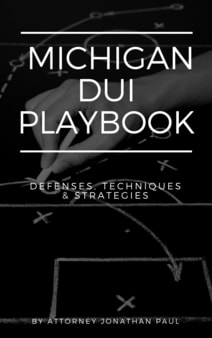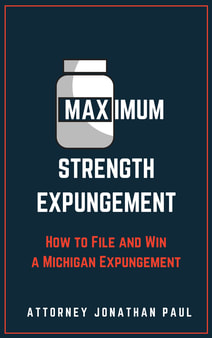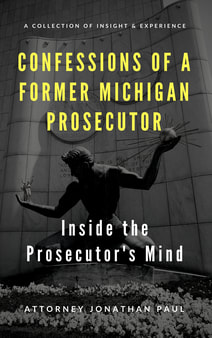
Peter leaves me a voicemail early Saturday morning about a recent Resisting Arrest incident. He says that he was out drinking at a bar with his friends and got into a dispute with one of the bouncers; he was forced to leave the bar and pushed out onto the street. He felt this was unfair and tried to re-enter the bar; he was denied, and the police were called to the scene.
Some of the details are fuzzy, and Peter is still terribly upset about a situation which he believes was not his doing. He is upset at the bouncers and the police department. Peter is in a very emotional state and has the fight or flight mindset impacting what he is telling me about the case. I want to be respectful of Peter’s version of the story, but it is my job to figure out what the evidence is, not how Peter views what happened.
As a former prosecutor, I view cases from both sides, and understand that a prosecutor only cares about the four corners of the police report. It’s also important to focus on the underlying facts of the criminal charge, not use all of our energy and effort on disputing something the client is not even charged with; here is what I mean:
Peter is recounting things that happened in the bar with the bouncer, something about bad service, a bartender giving him the wrong drink, and being unfairly kicked out of the bar. It sounds like he had a bad night, and maybe got some bad customer service. The problem with this is Peter is NOT charged with being kicked out of a bar; it’s what is upsetting him, but he’s actually charged with shoving a police officer.
Peter wants to focus on the “unfair” part, and not on the crime he committed. This is quite common for a client who is still fresh off the incident; they also tend to focus in on what they believe has two versions of the facts.
Sure, Peter could have valid points about bad customer service, he may even have a civil lawsuit against the bouncer if he was injured, but that is not my focus. My #1 and only focus is the felony charge of Resisting Arrest that Peter is now facing. The extra noise around the case is relevant to an extent, but NOT part of the equation for negotiations or at a potential trial.
If Peter is willing to refocus his energy, insight, and effort into the portion of the facts that landed him charged with a felony then we can get to work on figuring this out.
Peter acknowledges that from what he remembers, he did push the police officer, but he says he was really drunk and upset. Once he realizes that the case is all about THE PUSH, he begins to settle down, and is admittingly regretting this poor choice.
I do not want Peter to get too down on himself, I want him to understand the major opportunity presented in this case. Peter has no prior criminal history; he has a good job and a family he loves.
If handled correctly, we can isolate this moment in time, and explore the REASON this happened, not an excuse. We can’t use him being drunk as an excuse or a defense, but it appears it was one of the underlying reasons why he acted in a manner, which does not reflect his past.
The problem we face are those four corners of the police report. The prosecutor is going to review the officer and bouncer statements and read about a drunk man causing trouble at a bar; when the police were called, he then shoves a police officer. We have drunk, causing a scene and trouble for a business and assaulting a police officer. Although not charged with being drunk or anything with the bar, these are just pile-on bad vibes for the case.
We deal in perceptions with the prosecutor and judge, and this is a terrible first impression for Peter. The four corners of the police report will sink Peter if we don’t do anything to counteract this perception.
Remember when Peter was upset and arguing about what happened inside the bar? I explain to Peter that we’re going to turn this negative that he is so mad about, and wanted to “fight it” and turn it into a positive for our case.
We need to make sense of this case for the prosecutor and judge and isolate what happened. We aren’t going to dispute it, because he’s not charged with doing anything inside the bar, but we are going to flush out he underlying facts that ended up with an officer being pushed by Peter.
We’re going to rely on the fact that Peter was drunk and upset to help our case; the more drunk and upset he is, the better for our case! That might not make sense at first, but we need to explain why someone without a criminal record, or any history of issues would push a police officer outside of a bar. This can’t be his usual Friday night activity; causing scenes and pushing cops. We don’t fight these facts, we use them with the prosecutor and judge to our advantage!
If Peter is so drunk and made, his decision to push the police officer makes more sense. Peter respects the law, and his own father is a retired police officer; if he were sober, or drunk, but not upset, there is no way he would push the police officer.
Of course, we can’t go as far as to use these circumstances as a “free push the cop” card but if we can explain the underlying issues, we can isolate the result. Well now what? Every time Peter gets drunk or upset, he is going to break the law?
Well no, Peter is 45 years old and has never had a criminal issue before. But is this a new thing for him? If it is, what can we do about it?
As we explore the issue more it sounds like Peter has been having issues with his wife and was out to blow off some steam. That steam resulted in getting so drunk that he lost control of his better judgment and being drunk and forced to leave the bar put blinders on his decisions. If we can properly address this new underlying issue, we can avoid the #1 worst thing to be at the courthouse.
We do this by being proactive and turning this negative night for Peter into a positive time of growth, reflection, and insight. If Peter is willing to put himself out there, get help and be open to making changes, I am confident that the prosecutor and judge will better understand his actions, and agree to support our long-term goals for Peter.
Peter agrees that the best approach is to take control of his case in a proactive way. He also agrees that his drinking in past few weeks has accelerated and his stress level is way up. He was drinking in order to get through the tough days and nights and agrees that he could use professional help.
I am proud that Peter is open-minded about getting this proactive help, and better understanding of his mental, emotional, and physical health. This process will begin with professional counseling to address the stress and anxiety issues; we also need to address the new substance abuse problem developing.
It is also important to address the “anger management” issue from the push; while Peter may not have an issue with anger as a whole, but in a particular moment his brewing anger ended up in a felony charge. We are going to be humble and be open to all help for this case.
We also want to demonstrate that Peter is a productive member of our community; this comes with highlighting his career, education, and family, but all of that was in place when he pushed the officer; we want to do something new.
We decide to sign-up for community service hours in the same community where this incident happened. We want to give back positive energy and put in sweat equity. We have a case where we disrupted a local business and respected and assaulted a member of law enforcement. We cannot change what happened, but we can certainly do our best to counteract the negative energy which the incident; it is a start, and only helps our position.
Because Peter has agreed to be proactive, we now have a path to create an outstanding result in his case. Both the result itself, and setting him up to succeed in the future, with his family, career, and his overall well-being.
Peter’s progress will be shared with the police officer, prosecutor, and judge; there are the key players that we need to look beyond the four corners of the police report.
It is our goal to work toward avoiding a felony on Peter’s record and avoiding jail time; those are our two main goals, and both can be accomplished because of Peter’s decision to be proactive.
We shifted Peter’s mindset of anger, frustration and feeling like a victim to a humbled and reasonable mindset that focused on tangible goals with a comprehensive plan to reach them.
Some of the details are fuzzy, and Peter is still terribly upset about a situation which he believes was not his doing. He is upset at the bouncers and the police department. Peter is in a very emotional state and has the fight or flight mindset impacting what he is telling me about the case. I want to be respectful of Peter’s version of the story, but it is my job to figure out what the evidence is, not how Peter views what happened.
As a former prosecutor, I view cases from both sides, and understand that a prosecutor only cares about the four corners of the police report. It’s also important to focus on the underlying facts of the criminal charge, not use all of our energy and effort on disputing something the client is not even charged with; here is what I mean:
Peter is recounting things that happened in the bar with the bouncer, something about bad service, a bartender giving him the wrong drink, and being unfairly kicked out of the bar. It sounds like he had a bad night, and maybe got some bad customer service. The problem with this is Peter is NOT charged with being kicked out of a bar; it’s what is upsetting him, but he’s actually charged with shoving a police officer.
Peter wants to focus on the “unfair” part, and not on the crime he committed. This is quite common for a client who is still fresh off the incident; they also tend to focus in on what they believe has two versions of the facts.
Sure, Peter could have valid points about bad customer service, he may even have a civil lawsuit against the bouncer if he was injured, but that is not my focus. My #1 and only focus is the felony charge of Resisting Arrest that Peter is now facing. The extra noise around the case is relevant to an extent, but NOT part of the equation for negotiations or at a potential trial.
If Peter is willing to refocus his energy, insight, and effort into the portion of the facts that landed him charged with a felony then we can get to work on figuring this out.
Peter acknowledges that from what he remembers, he did push the police officer, but he says he was really drunk and upset. Once he realizes that the case is all about THE PUSH, he begins to settle down, and is admittingly regretting this poor choice.
I do not want Peter to get too down on himself, I want him to understand the major opportunity presented in this case. Peter has no prior criminal history; he has a good job and a family he loves.
If handled correctly, we can isolate this moment in time, and explore the REASON this happened, not an excuse. We can’t use him being drunk as an excuse or a defense, but it appears it was one of the underlying reasons why he acted in a manner, which does not reflect his past.
The problem we face are those four corners of the police report. The prosecutor is going to review the officer and bouncer statements and read about a drunk man causing trouble at a bar; when the police were called, he then shoves a police officer. We have drunk, causing a scene and trouble for a business and assaulting a police officer. Although not charged with being drunk or anything with the bar, these are just pile-on bad vibes for the case.
We deal in perceptions with the prosecutor and judge, and this is a terrible first impression for Peter. The four corners of the police report will sink Peter if we don’t do anything to counteract this perception.
Remember when Peter was upset and arguing about what happened inside the bar? I explain to Peter that we’re going to turn this negative that he is so mad about, and wanted to “fight it” and turn it into a positive for our case.
We need to make sense of this case for the prosecutor and judge and isolate what happened. We aren’t going to dispute it, because he’s not charged with doing anything inside the bar, but we are going to flush out he underlying facts that ended up with an officer being pushed by Peter.
We’re going to rely on the fact that Peter was drunk and upset to help our case; the more drunk and upset he is, the better for our case! That might not make sense at first, but we need to explain why someone without a criminal record, or any history of issues would push a police officer outside of a bar. This can’t be his usual Friday night activity; causing scenes and pushing cops. We don’t fight these facts, we use them with the prosecutor and judge to our advantage!
If Peter is so drunk and made, his decision to push the police officer makes more sense. Peter respects the law, and his own father is a retired police officer; if he were sober, or drunk, but not upset, there is no way he would push the police officer.
Of course, we can’t go as far as to use these circumstances as a “free push the cop” card but if we can explain the underlying issues, we can isolate the result. Well now what? Every time Peter gets drunk or upset, he is going to break the law?
Well no, Peter is 45 years old and has never had a criminal issue before. But is this a new thing for him? If it is, what can we do about it?
As we explore the issue more it sounds like Peter has been having issues with his wife and was out to blow off some steam. That steam resulted in getting so drunk that he lost control of his better judgment and being drunk and forced to leave the bar put blinders on his decisions. If we can properly address this new underlying issue, we can avoid the #1 worst thing to be at the courthouse.
We do this by being proactive and turning this negative night for Peter into a positive time of growth, reflection, and insight. If Peter is willing to put himself out there, get help and be open to making changes, I am confident that the prosecutor and judge will better understand his actions, and agree to support our long-term goals for Peter.
Peter agrees that the best approach is to take control of his case in a proactive way. He also agrees that his drinking in past few weeks has accelerated and his stress level is way up. He was drinking in order to get through the tough days and nights and agrees that he could use professional help.
I am proud that Peter is open-minded about getting this proactive help, and better understanding of his mental, emotional, and physical health. This process will begin with professional counseling to address the stress and anxiety issues; we also need to address the new substance abuse problem developing.
It is also important to address the “anger management” issue from the push; while Peter may not have an issue with anger as a whole, but in a particular moment his brewing anger ended up in a felony charge. We are going to be humble and be open to all help for this case.
We also want to demonstrate that Peter is a productive member of our community; this comes with highlighting his career, education, and family, but all of that was in place when he pushed the officer; we want to do something new.
We decide to sign-up for community service hours in the same community where this incident happened. We want to give back positive energy and put in sweat equity. We have a case where we disrupted a local business and respected and assaulted a member of law enforcement. We cannot change what happened, but we can certainly do our best to counteract the negative energy which the incident; it is a start, and only helps our position.
Because Peter has agreed to be proactive, we now have a path to create an outstanding result in his case. Both the result itself, and setting him up to succeed in the future, with his family, career, and his overall well-being.
Peter’s progress will be shared with the police officer, prosecutor, and judge; there are the key players that we need to look beyond the four corners of the police report.
It is our goal to work toward avoiding a felony on Peter’s record and avoiding jail time; those are our two main goals, and both can be accomplished because of Peter’s decision to be proactive.
We shifted Peter’s mindset of anger, frustration and feeling like a victim to a humbled and reasonable mindset that focused on tangible goals with a comprehensive plan to reach them.








